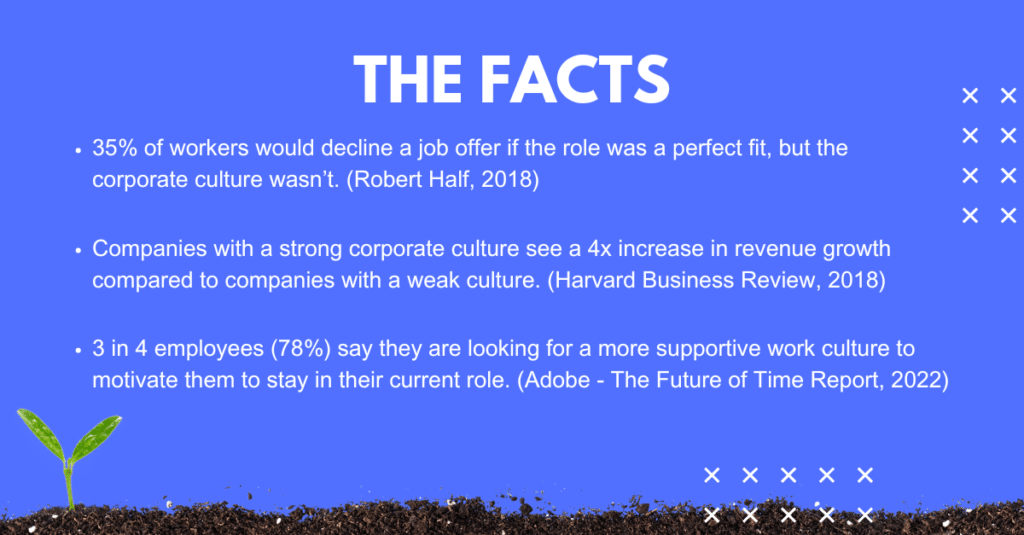It is never too soon nor is a company ever too small to foster a positive environment for employees. Workplace culture-building starts from day one, and every employee—leaders included—has a hand in either maintaining or dismantling it.
Workplace culture is a set of consistent yet ever-evolving values that guide your company’s mission, and this culture is reflected in the way clients and employees are regarded. A strong, positive workplace culture improves teamwork, inspires innovation, and reduces stress; while low morale, too many sick days, high turnaround, and an inability to hire or maintain top talents are symptoms of a workplace culture that needs improvement.

The Requirements for Creating a Positive Workplace Culture
First, identify and analyze key aspects of your company’s ethos to create a foundational mission that’ll inspire employees’ engagement and motivation. When there’s a clear overarching purpose, it’s easier to see where all the effort is going, which can then inform employees on how to achieve their individual goals. Ultimately, the employee experience (this includes leadership style and team dynamics) should reflect the company’s core values alongside the beliefs of the leaders in charge.
Secondly, leaders (presidents, directors, executives, supervisors) are the ones who establish and spearhead the tenets of culture, so what they focus on and the values they deem important are crucial. If a leader is empathetic and passionate, then that paves the way for the employees to follow suit. Actions speak louder than words, after all.
Consistency is paramount when considering how to foster a positive workplace culture. Expectations should be set, so employees know how to behave and socialize while achieving their daily tasks. Rules should be clear and equally enforced as unpredictability and unethical behavior can harbor distrust, undoing any positive aspects from the inside out. No one should be untouchable when it comes to the established rules.
And finally, culture is created via the daily experiences of a group and their shared beliefs. From a good onboarding experience to thoughtful employee evaluations, all facets of work-life should feel genuine and well-intentioned. Leaders should encourage feedback and recognize employees’ efforts during meetings. This open communication will instill trust and enable employees to feel seen and valued, strengthening their commitment to the company’s mission.
How to Improve Workplace Culture
- Set clear objectives and short-term goals for every department.
- Educate employees on the long-term goals and define the company’s mission.
- Establish a transparent and open form of communication for team members and management and empower everyone to share their suggestions and thoughts via surveys, workshops, and one-on-one meetings. You never know where the next big idea will come from.
- Aim for diversity when hiring and networking and promote inclusivity by sharing and honoring preferred names and pronouns.
- Create opportunities for employees to socialize by throwing office birthday parties, scheduling outside of work get-togethers, and allowing time for some friendly conversation before meetings.
- Grant employees a mental health day and provide a way for everyone to disclose their issues—personal or work-related—that they are currently facing.
- Acknowledge that mistakes are going to happen and treat them as a learning opportunity.

Sources
https://www.umassglobal.edu/news-and-events/blog/tips-for-creating-a-positive-work-culture
https://builtin.com/company-culture/positive-work-culture
https://professional.dce.harvard.edu/blog/6-tips-for-building-a-better-workplace-culture/
https://www.jobvite.com/wp-content/uploads/2022/03/JSN-2022-3-25.pdf



